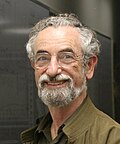Elliott Hershel Lieb (born July 31, 1932) is an American mathematical physicist. He is a professor of mathematics and physics at Princeton University....
30 KB (3,203 words) - 18:26, 4 October 2024
Stability of matter (section Lieb–Thirring inequality)
shorter and more conceptual proof was found later by Elliott Lieb and Walter Thirring in 1975 using the Lieb–Thirring inequality. The stability of matter is...
20 KB (2,572 words) - 16:25, 7 November 2024
the Temperley–Lieb algebra is an algebra from which are built certain transfer matrices, invented by Neville Temperley and Elliott Lieb. It is also related...
18 KB (2,928 words) - 19:08, 16 March 2024
Adiabatic accessibility (section Lieb and Yngvason)
1909 ("adiabatische Erreichbarkeit") and taken up 90 years later by Elliott Lieb and J. Yngvason in their axiomatic approach to the foundations of thermodynamics...
8 KB (1,191 words) - 09:09, 10 April 2024
field of analysis, the Brezis–Lieb lemma is a basic result in measure theory. It is named for Haïm Brézis and Elliott Lieb, who discovered it in 1983. The...
4 KB (689 words) - 19:42, 12 November 2021
Borell–Brascamp–Lieb inequality is an integral inequality due to many different mathematicians but named after Christer Borell, Herm Jan Brascamp and Elliott Lieb. The...
4 KB (498 words) - 21:42, 8 March 2023
ISBN 978-0-471-41526-8 Lieb, Elliott H. (2002). "The Stability of Matter and Quantum Electrodynamics". arXiv:math-ph/0209034. This realization is attributed by Lieb, Elliott...
25 KB (3,449 words) - 13:58, 4 August 2024
songwriter Elliott H. Lieb (born 1932), American mathematical physicist and professor of mathematics Ernst Lieb, American business executive Fred Lieb (1888–1980)...
830 bytes (139 words) - 08:53, 5 March 2022
soon afterwards by Elliott H. Lieb, who at the same time extended it to the SU(2) case. The conjecture was proven in 2012, by Lieb and Jan Philip Solovej...
2 KB (264 words) - 01:48, 1 August 2024
probability distributions. Both are named after Herm Jan Brascamp and Elliott H. Lieb. Fix natural numbers m and n. For 1 ≤ i ≤ m, let ni ∈ N and let ci > 0...
13 KB (2,384 words) - 23:48, 19 August 2024


